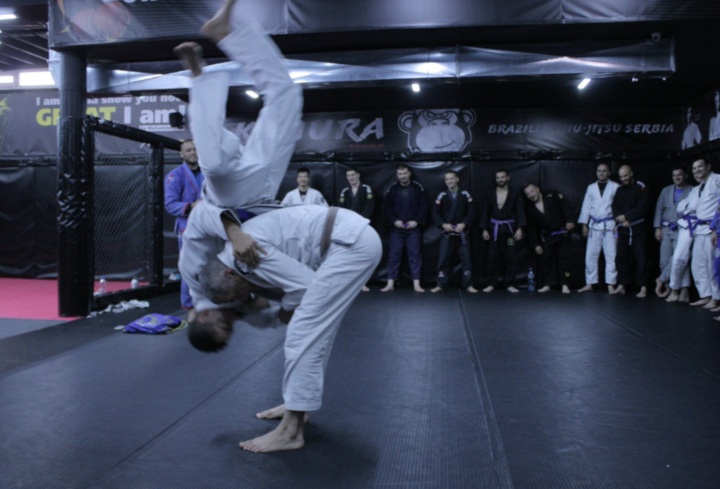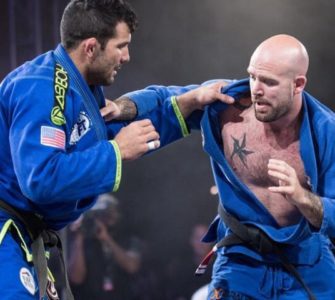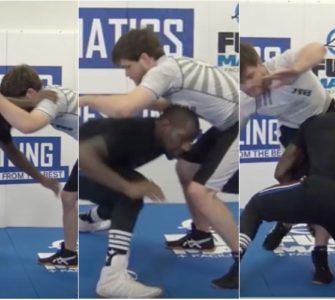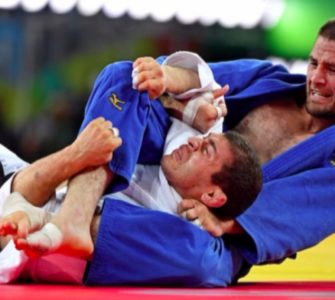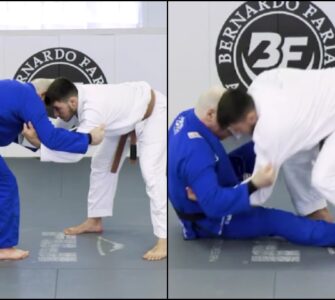Love them or hate them, throws are something every jiujiteiro needs to practice in order to bring his A-game to the table. And, as important it is to learn the throw techniques, it is as important to learn how to defend yourself from being thrown as well.
Having set that goal, let’s take a look at two crucial components that make a successful defense against being thrown – with Shintaro Higashi.
JUST DO THE OPPOSITE! BUT… BE CAREFUL
Shintaro starts with an example where his training partner, George, goes to setup an Osotogari. With this throw, George’s main goal is to put all of Shintaro’s weight onto his right leg and then execute the technique.
In order to defend from the Osotogari and many other types of throws, Shintaro says that – in simple terms – you have to do the opposite of what your training partner or opponent does.
In this case, as George looks to shift his weight into one direction, stepping in and hooking his leg, Shintaro resists by going towards the opposite direction.
This is true for any Judo technique, Shintaro says: you can defend it by simply going in the opposite direction.
However, there’s risk involved: if your opponent misdirects you by, in this case, stepping in the Osotogari and leads you to shift your weight into the opposite direction, he can then go for the Sasae and take you down that way as well!
You need to be aware of that danger and, as Shintaro mentions, you shouldn’t aim at using only your body to defend the throw. Instead, there’s an another component that will make your throw defense much more bulletproof: hand positioning.
WHERE ARE THE HANDS?
Shintaro emphasizes that if you have better hand positioning than your opponent does, the likelihood of him successfully executing the throw will be significantly reduced.
But, what does „better hand positioning“ mean? It means that your opponent is not controlling your head! This makes it that much easier for you to lean into his Osotogari, in this case.
So, the better hand positioning he has in relation to your head, the more you’ll need to commit when defending the throw! Your opponent will have much more leverage at his disposal with that, so you need to make sure that you have better hand positioning than he does.
MAKING IT WORK
Having better hand positioning is first and foremost, as it leads to using your own body more effectively when defending. Shintaro switches to another throw in order to demonstrate this further.
Pay attention to how he first creates a strong frame on his training partner’s shoulder and then grabs his sleeve. It is the shoulder frame that prevents his partner’s hips from coming towards him – without this frame, it will be very difficult for you to stop your opponent’s throw. Then, notice how he uses the sleeve grip to turn George’s shoulder – getting his body out of alignment by doing so.
Doing this, Shintaro’s once more successfully defending himself by turning into the direction opposite to the one George wants him to turn towards, thus reversing the situation into his own favor.
He goes on to summarize that a throw defense is made up from two components:
1) Establishing good hand position.
2) Reversing the attack by using your body.
To conclude, he drops yet another nugget of wisdom: when your opponent goes to come back up from a throw attempt which you defended, it’s then that you have a great chance to go for a throw of your own!
Watch the video below to see it explained in action:
Learn how to throw with confidence and dominate on the mat with all the modern judo secrets, with Olympic gold medalist and BJJ black belt Satoshi Ishii.

